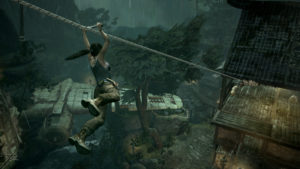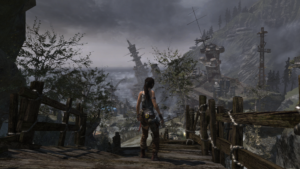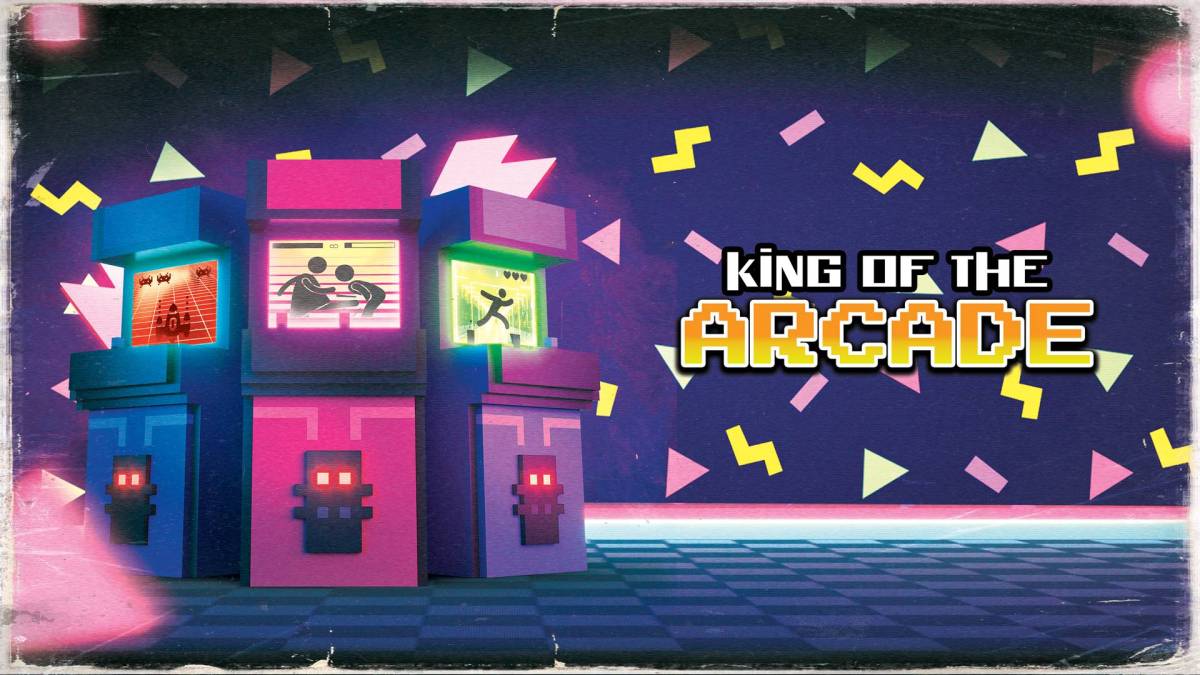
Platforms: Microsoft Windows, OS X, Linux, PlayStation 3, PlayStation 4, Xbox 360 (reviewed), Xbox One
Note: This review only includes thoughts on the single player experience.
Tomb Raider is a franchise that I’ve never been particularly fond of. I’ve played a few games in the series and they weren’t bad, but the tongue-in-cheek nature of those games and the way Lara Croft was portrayed was something that always put me off. This lack of interest quickly changed when the reboot of Tomb Raider was announced though. To take this not-so-serious franchise and turn it into a brutal and gritty story of survival was an ambitious idea, but was the follow through on this idea a stellar feat or something best left to rot deep inside a cold, dark forest?
Tomb Raider at its core has always been about Lara Croft and this version is no different. This time around, Lara is on an expedition in search of the lost kingdom of Yamatai and sets out on the ship, Endurance. She is joined by a variety of crew members, most of which are working toward documenting whatever is found during the trip for some sort of television program. Things quickly take a turn for the worse as the group enters the dangerous waters of the Dragon’s Triangle and end up shipwrecked. Soon after washing up on shore, many within Lara’s group are abducted by members of a violent cult known as the Solarii Brotherhood. This leaves Lara in a fight to not only survive and escape these psychopaths, but also to find her friends and a way off of the island.
The story of Tomb Raider is decent enough, but isn’t going to blow your socks off. I didn’t find it all that compelling, yet it did a nice job of moving the game along from point to point and was paced very nicely. While the overall narrative was nothing too spectacular, the development of Lara Croft as a character was a highlight of the game. Seeing her go from confused, timid and just doing whatever she could to survive to a complete badass is something I won’t soon forget. She witnesses and experiences some incredibly disturbing things throughout, so getting to see her persevere and come out stronger was an amazing journey. In the beginning she lacked confidence and had to reassure herself of everything she did, but by the end of the game she was screaming things like “You better run, because I’m coming for you all!“ and “Die you son of a bitch!” and I was right there cheering on those sentiments. Not often does a game come along that produces a character that I truly care about and the fact that it happened in a Tomb Raider game (after the joke that Lara Croft had become thanks to previous titles) is something that should be applauded.
Story and character development aside, Tomb Raider solely as a gameplay experience is incredible. Like games in the franchise before it, most of your time will be spent exploring the mysterious island you’ve washed up on. During this exploration you’ll be tasked with doing a lot of platforming in order to maneuver around the environment and not only is it intuitive and seamless, but it remains enjoyable throughout the game. In Tomb Raider, the platforming stays fresh throughout thanks to a variety of new tools and abilities you acquire. For instance, you’ll use your axe to climbs certain craggy walls and you’ll use a bow and arrows to create rope lines that allow you to reach new areas. In some ways this progression feels a bit like a Metroid or Castlevania game (in the vaguest sense) and when you begin to string together all of these skills you’ve learned, the platforming is an absolutely joyful experience.
With exploration comes collecting and there are a ton of items to find in Tomb Raider. Relics, documents and GPS caches serve as your main collectibles, each of which add to the game’s lore (relics and documents a little more so than the GPS caches). Some you’ll find just playing through the game and others will take a little more work to locate. Luckily, there are treasure maps that can also be found that will help point you in the right direction, if you so desire to collect them all. There are also numerous challenges to complete (each unique to a specific location), but most just boil down to finding certain items in the environment and collecting or destroying them. These can add to your play time, but I found I wasn’t as keen on completing these as I was collecting the other items.
Also sort of lumped into the collection aspect of Tomb Raider are various optional tombs you can find during the course of the game. Each one has a unique feel and design and all were nice distractions well worth their rewards, but these tombs did leave a little to be desired. Each tomb is rather easy to find (thanks to blatant signs within the game) and perhaps just as easy to complete. Once in an optional tomb you’ll face a small puzzle and then you get your reward (more on these later). A little more challenge would have been nice since these are optional, but completing each tomb is still a fun experience and well worth your time.
Much like the tombs, a majority of Tomb Raider’s puzzles fall into the simplistic category, but that’s not necessarily a bad thing. The puzzles, much like the platforming, are presented in such a way that solving them is not only intuitive, but they also keep the game moving along at a steady pace. That’s not to say there weren’t a couple that had me scratching my head, even if just momentarily. Thankfully, should you happen to find yourself stumped at any point (which shouldn’t happen very often), the game offers up “Survival Instincts” mode, which helps you identity objects that can be interacted with in the environment. This is completely optional, but is a nice tool if you happen to find yourself in a bit of a pickle.
While exploration and puzzle solving is where you’ll see most of your time invested, a good chunk of gameplay is devoted to combat. The combat in Tomb Raider is a lot of fun and works well when it is used sparingly, but when it starts to become the focus and you have enemies attacking you from multiple directions, it begins to suffer a bit. In most cases you can take a stealth approach and systematically take down your foes, but there are some sections where that simply isn’t an option and these can make for a frustrating experience. Although these situations only popped up on a couple of occasions and shouldn’t be something that has you questioning whether or not to play Tomb Raider, they can momentarily take you out of the experience and might take a few (frustrating) attempts to overcome.
The combat of Tomb Raider revolves mostly around four weapons: bow, pistol, rifle and shotgun. While most of your encounters will probably be handled using your bow, each of these weapons eventually becomes useful and can be upgraded with salvage that you loot from slain enemies or animals and scattered throughout the environment. You’ll also need to find parts for each weapon in order to perform some of the upgrades, but these are a little harder to find and seemingly drop at random times (or upon completing an optional tomb). Unlike some other games, weapons in Tomb Raider actually look and feel significantly different and more powerful as they are upgraded. Upgrades offer everything from increased damage to new ammo types, which isn’t too shabby considering you’re basically fixing them with random garbage you find.
Whenever you defeat an enemy, take down and loot an animal, complete an objective, or finish an optional tomb you’ll also earn experience points and as you acquire more and more XP you’ll be able to unlock special skills in three different categories: Survivor, Hunter and Brawler. Survivor abilities will help you gain more salvage and find tombs and collectibles more easily. With the Hunter skill set you’ll be able to focus on mastering your weapons and, finally, the Brawler abilities put emphasis on hand-to-hand combat skills. Some of these skills are more useful than others, but to get that instant feeling of gratification for each and every thing you do in the game is indeed satisfying.
Once you finish up the game there isn’t a traditional new game plus mode, but you will be able to go back and visit areas of the island in order to wrap up any loose ends you might have. This is done by using various campsites found throughout the game. These campsites not only let you fast travel to other areas, but they are also where you’ll assign your skill points and upgrade your weapons. While having the option to go back and upgrade your weapons completely, unlock all skills, finish each challenge and find every collectible and optional tomb is a welcome feature, some of these aspects can become a bit of a grind towards the end. Once you start going back to previous areas, enemies will spawn infrequently, making it somewhat tough to acquire all of the salvage you’ll need for weapon upgrades (I had to resort to killing deer and rabbits to get my last few hundred salvage). Luckily, XP is a little easier to amass by simply completing sets of relics or documents and finishing challenges. One thing I can say is that even though it got a little tedious near the end, I still felt compelled to go back and find every little thing I could, which I can rarely say about a game.
Tomb Raider not only reinvents Lara Croft as a character and makes her someone people can relate to and care about, but it’s also a damn fantastic game. The combat stumbles in certain spots, but only slightly and never in a way that has a lasting effect on your experience. Outside of that one small issue, Tomb Raider offers up an absolutely amazing experience. If I had to describe it in just one word, it’d be “fun”, and honestly, that’s all I really ask for from the games I play. If you’re even the slightest bit curious about reboot of the Tomb Raider franchise, I highly recommend you give it a shot because it is one of the best games I’ve played in years.







